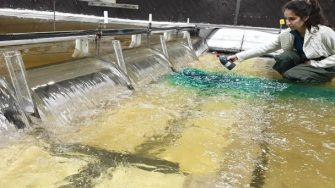Physical modelling provides deep insights into dam safety
Scrivener Dam is a critical piece of Canberra’s infrastructure, maintaining water levels of the iconic Lake Burley Griffin. The dam is located on the Molonglo River, on Canberra’s Lady Denman Drive and was constructed in the early 1960s.

